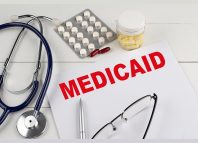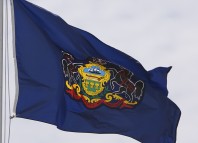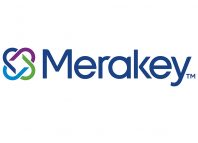By Robert Swift, Staff Writer, Capitolwire
HARRISBURG (March 17) – A clearer picture is emerging of what Pennsylvania can anticipate in federal aid under the newly enacted American Rescue Plan (ARP).
The $1.9 trillion spending plan signed by President Biden last week is the third round of relief from Washington since the COVID-19 pandemic overwhelmed the nation one year ago.
The Commonwealth and local governments stand to receive billions of federal dollars that can be spent for various purposes during a three-year period.
Schools and higher education institutions in Pennsylvania are due to receive large chunks of federal aid. So are private businesses in Pennsylvania struggling to recover from the accompanying economic recession.
ARP provides aid to individuals and families in the form of recovery rebates and tax credits for children and dependent care assistance and continuing unemployment compensation.
The broad aid categories under ARP include transportation, housing, child care, health and human services which includes COVID-19 vaccination programs, agriculture, food and nutrition and veterans’ affairs, according to an analysis by the House Democratic Appropriations Committee (HDAC).
There are also big programs for which Pennsylvania’s aid share hasn’t been calculated yet: Medicare, Nursing facilities and the Children’s Health Insurance Program.
Gov. Tom Wolf highlighted ARP’s impact for families and individuals in Pennsylvania when the plan passed Congress.
“It will provide direct payments to more than 5.5 million households,” said Wolf. “It will provide $671 million in emergency rental assistance. It will extend federal unemployment insurance benefits that will help more than 400,000 Pennsylvanians make ends meet.”
ARP will provide nearly $7.3 billion in direct aid to state government for such purposes as recouping revenue losses due to fighting the pandemic, extra pay for essential workers and water, sewer and broadband infrastructure.
The issue of ARP aid surfaced Wednesday as the House Appropriations Committee approved two shell bills, House Bill 935 and House Bill 936, to serve as vehicles for the Fiscal Year 2021-22 state budget.
House Appropriations Majority Chairman Stan Saylor, R-York, said the goal is to get the new federal dollars out as soon as possible as part of the next budget.
“This is a historic opportunity, said Appropriations Minority Chairman Matt Bradford, D-Montgomery. “We should be smart in looking at it.”
Bradford suggested giving priority to addressing inequities in education, long-term care for senior citizens, the hourly minimum wage and poverty exemptions for the state personal income tax.
Saylor responded that discussions about ARP aid have to take into account large amounts of unauthorized overspending by the state Department of Human Services in the current budget.
The Senate Appropriations Committee had rescheduled its state budget hearings to run later in March and April in order to account for the coming aid from Washington.
The plan’s impact will be discussed during the hearing for Budget Secretary Jen Swails scheduled for April 22, said appropriations panel executive director John Guyer.
Under ARP, the direct aid to local governments in the Keystone State totals $6.1 billion. Direct local aid was missing from the first two federal COVID relief packages enacted last year. The state’s 67 counties will split an estimated $3 billion from that pot.
“The American Rescue Plan offers counties the flexibility to address a range of local needs, from covering increased expenditures related to the pandemic, to replacing lost revenues, to providing further assistance within their communities, to investing in infrastructure such as broadband,” said Lisa Schaefer, executive director of the County Commissioners Association of Pennsylvania.
“This is a significant amount of money,” said Rick Schuettler, executive director of the Pennsylvania Municipal League.
Schuettler said it can be used to make up for lost revenue, undertake water, sewer and broadband infrastructure projects and helping local businesses hurt by the pandemic.
The League plans to provide guidance to municipalities outlining best practices for spending the money coming from Washington.
Under ARP, Pennsylvania elementary and secondary schools will receive an estimated $5 billion for use through September 2023. There is aid for private schools, special education students and homeless students.
ARP is placing greater emphasis on addressing learning loss and remedial education needs due to the pandemic and students’ academic, social and emotional needs, according to the HDAC analysis.
This translates in about $900 million going to school districts and charter schools to address learning loss as well as aid for summer enrichment and afterschool programs and $109 million dedicated for special education.
“[ARP] provides dedicated education funding that will help schools make in-person instruction as safe as it can be, while intensifying support and instruction for students who have experienced delayed learning,” said Chris Lilienthal, spokesman for the Pennsylvania State Education Association.
Lilienthal added that ARP will ensure schools don’t have to resort to layoffs of educators because of a decline in local tax revenue collections and other pandemic impacts.
Higher education institutions in Pennsylvania stand to receive $1.3 billion in direct federal aid.
“The System is projected to receive a total of $219 million,” said David Pidgeon, spokesman for the Pennsylvania State System of Higher Education. “Of that, half is to go to students for emergency aid and the other half can be used by the universities to address COVID needs.”
Businesses will receive aid in a number of categories: economic disaster loans, restaurant revitalization grants, grants to “shuttered venues” and economic adjustment assistance. The Pennsylvania share of business aid has yet to be determined.
Under the umbrella category of health and human services, Pennsylvania is to receive $1.2 billion for child care programs, $34 million for Head Start, $5.7 million for family violence prevention, $46 million for a community mental health services block grant, $47 million for a substance abuse prevention and treatment block grant and $260 million for low-income energy assistance.
In transportation, Pennsylvania will receive $1.25 billion in federal transit administration grants.
-30-








